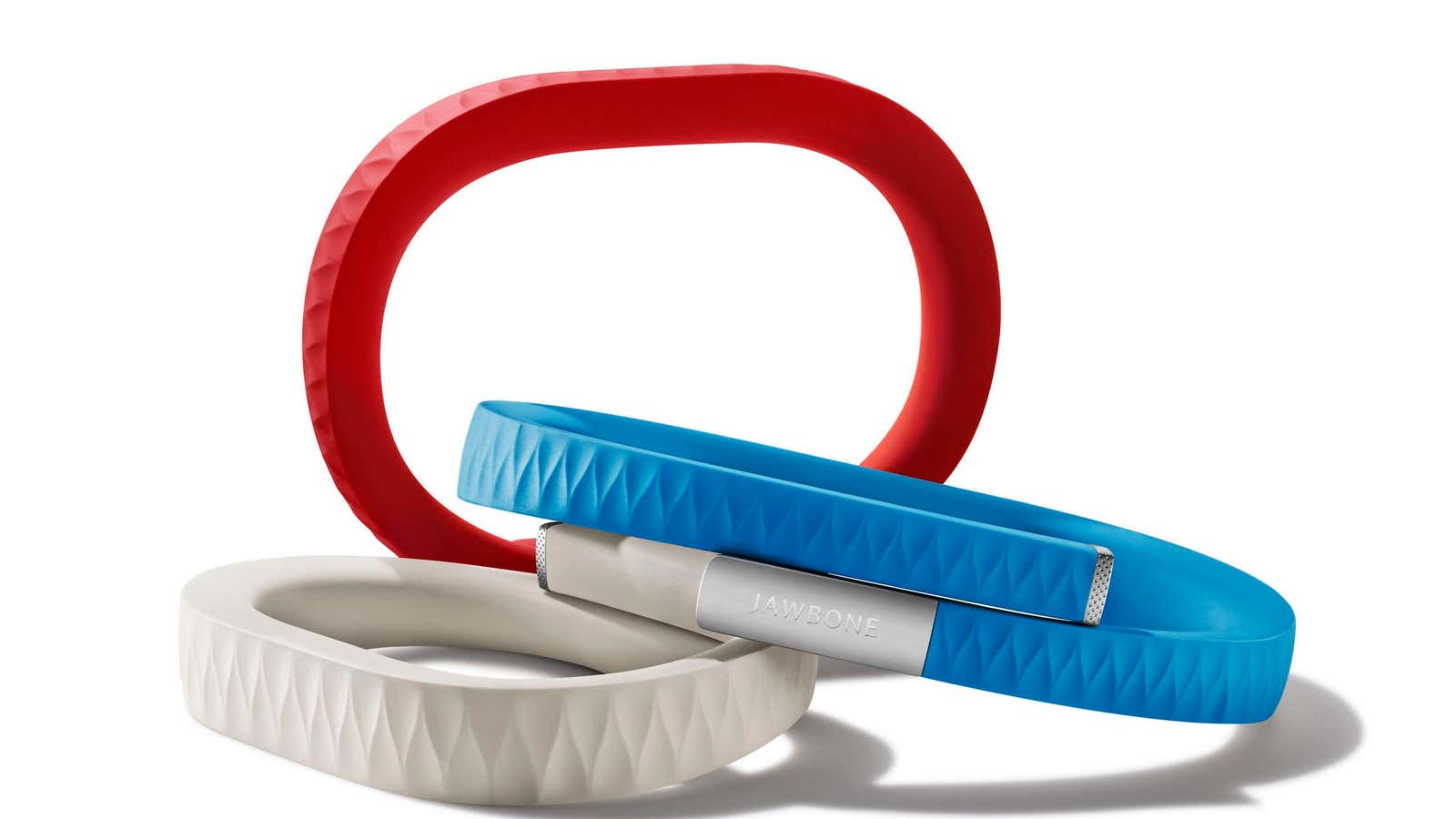Privately-held Jawbone is trolling for additional funding as the company, known for its Up series of health-tracking bracelets, aims to expand its business.
Sources tell Quartz that the San Francisco-based company could be aiming to raise several million dollars in fresh funding. That would be on top of the more than $100 million in debt and equity that it raised last fall.
Hosain Rahman, Jawbone’s CEO, is a well-connected Stanford University graduate who has raised $279 million since Jawbone’s launch, and the company’s past investors already read like a Who’s Who of tech funding. They include JP Morgan Asset Management, venture funds Andreessen Horowitz, Kleiner Perkins, and Sequoia Capital, and hedge funds Silver Lake and Fortress Investment Group.
Although it’s not clear what Jawbone intends to do with its new money, the company has been going toe-to-toe with rival fitness-band companies like Fitbit, which produces a number of competing fitness gadgets that track everything from daily calorie intake to sleep patterns.
JP Morgan Chase deal rainmaker Jimmy Lee, who played a role in taking Facebook public, is a part of team involved in raising funds for Jawbone, according to sources. The bank has been beefing up its work with tech startups, with an eye to getting their business when these companies later go public.
A call to a Jawbone spokeswoman was not returned and JP Morgan spokeswoman declined to comment.
It’s also not clear whether Jawbone is looking for debt, equity or a mix of both in this round. In interviews, Rahman has suggested that Jawbone is seeing high demand, and that debt may be the easiest way for Jawbone to grow. ”We’ve been experiencing crazy sell-through demand, particularly since the relaunch of Up,” Rahman told Fortune last September: “It’s been faster than anything we’d had before, and equity is not the most efficient way to scale all that. If you’re a software company with high demand, you just call Amazon and add more servers to your AWS [Amazon Web Services] account. But when you build a physical good, there is a lot more that goes into it—ordering materials, manufacturing, delivery… Debt is the most efficient way to finance that,” he said.
When a private company like Jawbone starts growing fast, figuring out how best to finance its expansion becomes more of a science. Sometimes taking on debt can be an easy solution, notes Gene Urcan, managing director at boutique investment bank Capello Group. “Debt can be easier for firms at early stage because they don’t have to give up ownership and they can restructure the debt with cheaper [ loans],” Urcan said. “When you sell equity you take on more partners, who have a say in your business and you potentially give up some of the upside of your business.”
First launched in 1999 as Aliph, Jawbone started out working for the military. It branched out into the consumer market only in 2007 with Bluetooth earpieces, and then its wireless Jambox speaker systems. It has focused its energies on health-related technology over the past three years. But that market is growing crowded: Jawbone now competes with Fitbit, Nike, and several lesser rivals. One source speculated that Jawbone likely will aim to grow over the next year and half before any attempts to take itself public.
